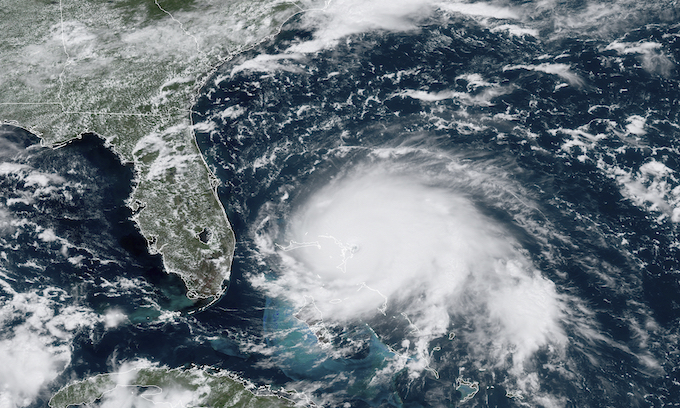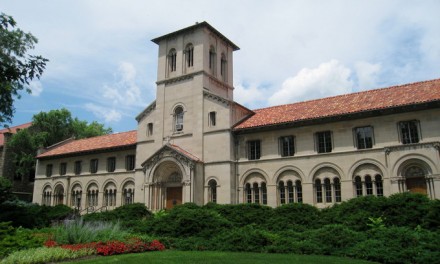For coastal Floridians and some of their neighbors to the north, it’s a September to remember. Hurricane Dorian’s roaring winds have sent millions to scour store shelves in search of generators, flashlights, bottled water and dry foodstuffs. Millions more have lined up to fill up their SUVs before fleeing up the interstates for shelter from the storm’s fury.
Preparing for the worst is a natural response to nature’s occasional depredations. But fears of a deteriorating climate belie the fact that dangerous storms which slam the eastern continental United States have actually decreased in modern times when climate-change conventional wisdom says heat from man-made greenhouse gases should be amping them up. Readying for disaster is smart, but expecting new “green” policies to calm the gales of September is wishful thinking.
The historical record compiled by the National Oceanic and Atmospheric Administration (NOAA) indicates that since the mid-19th century, hurricanes forming in the Atlantic Basin have made landfall along the U.S. coast with diminishing frequency. Between 1851 and 2004, the number of hurricanes of Categories 1 through 5 striking the U.S. mainland per decade has averaged 17.7. The most recent 10-year period that reached or beat the average was 1941-1950, when 24 hurricanes came ashore. Severe storms of Category 3 or higher have averaged six per decade, but the U.S. mainland has not suffered that number since the 1961-1970 interval.
Following the 2005 season that brought the devastation of Hurricane Katrina, the United States enjoyed a record 12 years without a major storm. The calm ended in 2017 with four hurricanes making landfall, followed by two in 2018. Time will tell whether the 2011-2020 period will reach the historical average or surpass it.
The drop-off in extreme weather events along the Atlantic and Gulf Coasts in no way minimizes their tragic impact. The U.S. population has grown exponentially from 23 million to 330 million since 1850. It is the clustering of communities along exposed coastlines, where ocean access is an attractive feature for industry and recreation, that is the primary cause for rising loss of life and property. Global warming, not so much.
Temperatures in the United States have stubbornly defied climate-change predictions. In 2005, NOAA activated the U.S. Climate Reference Network (USCRN), a new system of temperature stations purposely situated far from urban settings. Earlier sensors near cities were thrown off by dense concentrations of heat-trapping buildings and roadways, forcing government scientists to adjust readings in an attempt to filter out the heat island effect.
Now that thermometer readings across the country are relatively unadulterated, average temperatures haven’t climbed as expected, writes James Taylor, director of climate and environmental policy at the Heartland Institute, at Real Clear Energy: “USCRN temperature stations show no warming since 2005 when the network went online. If anything, U.S. temperatures are now slightly cooler than they were 14 years ago.”
Moreover, he writes, “All of the asserted U.S. warming since 1930 is the product of the controversial adjustments made to the raw data.” If climatologists had not fiddled with the numbers, he argues, U.S. temperature readings would have been essentially flat for the past 80 years.
It’s not just a U.S. phenomenon. “Globally, satellite instruments report temperatures have risen merely 0.15 degrees Celsius since 2005, which is less than half the pace predicted by the United Nations Intergovernmental Panel on Climate Change climate models,” according to Mr. Taylor.
Nonetheless, when September storms begin to churn up the Atlantic, it’s a natural occasion for the political and media classes to play upon the primordial human fear of howling wind and lashing seas. CNN has scheduled on Wednesday a seven-hour “climate crisis town hall” in which 10 Democratic presidential candidates are expected to expend more than their fair share of hot air promoting plans for tamping down the temperature, irrespective of uncooperative thermometers.
To a man and woman, they lean in favor of the Green New Deal, a socialism-inspired blueprint for a carbon-free economy. Were one of these worthies to win the White House in 2020, the cooling effect to the atmosphere that Americans share with the planet’s peoples would only be measured in hundredths of a degree Fahrenheit.
Hurricane Dorian and its fellow furies are likely spun up by a set of natural forces more complex than the current assumptions about the effects of man-made greenhouse gases. Until there are indisputable reasons for linking human activity with climatological effects, the best advice is to stay out of the danger zone when the gales of September storm ashore.
© Copyright (c) 2019 News World Communications, Inc.



















Recent Comments